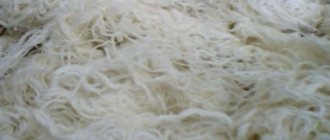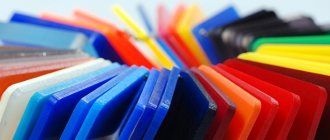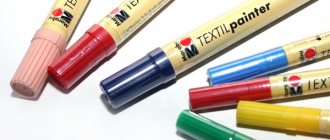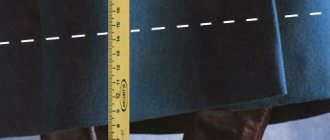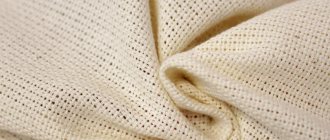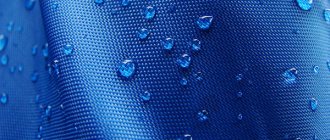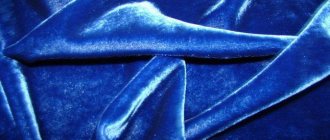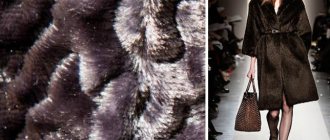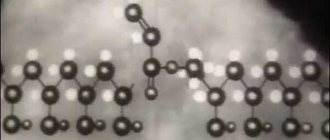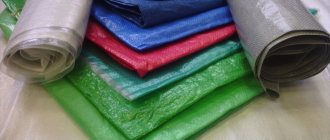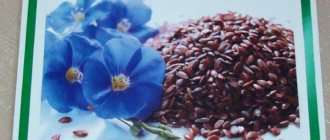Fabric Making Basics
Fabric is made from yarn, which in turn is made from fiber. The quality of the resulting fabric is highly dependent on the characteristics of the fibers.
Fibers are divided into natural and chemical, originating from natural raw materials or obtained as a result of chemical synthesis, for example, polymer fibers.
The entire technology is conventionally divided into three stages:
- Spinning;
- Weaving;
- Finishing.
Spinning
The basis of fabric production is spinning. It is a process that produces a long thread - a yarn woven from short fibers. This production process is carried out on a spinning machine.
The fibers produced by the mill are usually compressed into small bales. Then they are loosened and crushed using appropriate machines, while at the same time cleaning them from debris. The scutching machine produces canvas from threads, which is rolled into a roll.
The resulting canvas is then passed through carding surfaces covered with fine metal needles. At the exit, after carding, a sliver is obtained, which must be leveled on a draw frame, and then slightly twisted on a roving and twisting machine. After these operations, a roving is obtained.
On the spinning machine, the roving is leveled and drawn, then wound onto bobbins. A spinning machine for fabric production is serviced by spinners. Their responsibilities include eliminating yarn and roving breaks, changing bobbins and maintaining equipment.
Yarn is used to make:
- knitwear;
- sewing threads;
- non-woven and woven materials.
History of textiles
We are unlikely to know the name of the person and the circumstances when he, having taken off the animal skin, put on woven clothes. The history of textiles goes so deep into the darkness of millennia that it is not yet possible to establish its beginning.
But it is known that already in ancient times people mastered the production of fabrics. They were mainly made from wool yarn, with flax fiber being the second most popular and silk being the most expensive.
The rapid development of textile production in Europe began after the fall of Byzantium and the mass exodus of master weavers to the south of Italy. Thanks to them, in the XIII-XIV centuries. Venice, Genoa and Florence became the main manufacturing centers, and by the middle of the 15th century. Italy was already a leader in the number of workshops and the volume of textiles produced. In addition, the technology for making velvet was invented in the country.
The 16th century was marked by the appearance of openwork embroidery, which after a couple of decades was transformed into lace. Soon fillet sewing was invented.
The 18th century is the time of colonialism. A flow of strange goods and fabrics began flowing from conquered Asia to European countries. In textiles, in addition to the usual floral and heraldic patterns, oriental ornaments appeared. At the same time, changes occurred in the type of architecture: instead of huge halls, a craze for boudoir began. Accordingly, there was a need for new materials for draperies and upholstery of upholstered furniture.
After the United States gained independence, rapid cotton production and its supply to Europe began in the southern states. It quickly became the most popular and in demand.
The 20th century is a time of rapid development of chemistry and new technologies. Thanks to science, artificial, synthetic, mixed fabrics have appeared. Today this process continues: scientists and manufacturers invent new compounds and fibers.
Thus, fabric is not only a material purely for clothing or technical needs. The emergence of new materials is inextricably linked with the development of mankind.
Synthetic yarn
For synthetic fabric production, a more complex technological scheme is used. A liquid and viscous spinning mass is obtained from the initial components. It goes into a spinning machine designed specifically for processing synthetic fibers.
The fibers are formed using special dies - this is a small metal cap with many small holes inside. Using pumps, the mass enters the die and flows out through small holes. The flowing streams are treated with special solutions for hardening.
The creation of synthetic fiber is also the spinning of this fiber. Depending on what the fabric is intended for and what quality is required, the number of threads twisted into one is calculated. After finishing, the threads are wound onto bobbins and sent for weaving.
Weaving
The direct process of producing fabric from yarn is called weaving. The production equipment at this stage is maintained by weavers, who can service up to fifty automatic looms.
On a mechanical machine, the weaver replaces empty bobbins and eliminates thread breaks. The employee must know the requirements for the quality of fabric, the parameters of defective fabric and the reasons for the appearance of defects, measures to prevent and eliminate defects. Once the weaver has started the loom, it begins to combine the yarn into the resulting woven fabric.
Business prospects
Due to economic and political events that have occurred since the late 80s of the last century, this segment of production in Russia was practically destroyed. Today, most fabrics are imported from abroad – both legally and counterfeitly.
However, for the domestic market the situation is changing for the better. According to experts, fabric production in our country is a potentially promising niche. With a competent business plan and skillful management, an enterprise can quickly pay for itself and bring good profits. The demand for fabrics is large and continues to increase, while people are interested in both the budget segment and expensive high-quality fabrics with interesting designs.
Companies producing textiles for bed linen - calico, chintz, poplin - are on the rise. A large market share is also occupied by enterprises producing knitwear, suiting fabrics and cloth.
According to experts, the production of furniture fabrics is especially promising, since this market segment is actively developing and the demand for high-quality materials is very high.
The clothing production market in our country is also quite diverse, but the biggest competition here comes from imported manufacturers, primarily China. However, practice shows: in this area there is also a constant search for quality goods with unusual characteristics - pattern or texture. Therefore, those who can satisfy consumer demand have every chance of success.
We recommend reading:
- production of diapers
- how to start a wet wipes production
- how to open a sewing studio
- how to start a production of cotton gloves with PVC coating
- pet clothing store
Threads and weaves
There are transverse and lobar threads, intertwined in different ways. The grain threads are directed along the fabrics, as they are thinner and stronger. Transverse threads are thicker, shorter, and tend to stretch.
The fabric produced on the loom is called gray. Threads woven from fibers of different colors are called melange. Fabric made from melange threads is called similarly. But if threads with different colors were used to produce woven fabric, the fabric is called multicolored.
The properties of the future fabric depend on the type of weave:
- Large patterned weave – jacquard;
- Complex weave - pile, pique, openwork, loop, double;
- Simple weave - twill, satin, plain, satin, crepe and diagonal.
Finely patterned weaves are made on a single-shuttle automatic loom. Multicolored and complex weaves are used on a multi-shuttle automatic loom, large-patterned ones are used on Jacquard looms.
How fabric is made
Natural fibers of animal origin
Wool - wool is the hair of sheep, goats, camels and other animals. The bulk of wool (94-96%) for textile industry enterprises is supplied by sheep farming. Wool removed from sheep is usually very dirty and, moreover, very uneven in quality. Therefore, before sending wool to a textile factory, it is subjected to primary processing. Primary processing of wool includes the following processes: sorting by quality, loosening and scuffing, washing, drying and baling. Sheep wool consists of four types of fibers:
- down - very thin, crimped, soft and durable fiber, round in cross section;
- transitional hair - thicker and coarser fiber than fluff;
- awn - a fiber that is stiffer than transitional hair;
- dead hair - very thick in diameter and coarse, uncrimped fiber, covered with large lamellar scales.
Wool that consists predominantly of one type of fiber (down, transitional hair) is called homogeneous. Wool containing fibers of all these types is called heterogeneous. A special feature of wool is its ability to felt, which is explained by the presence of a scaly layer on its surface, significant crimp and softness of the fibers. Thanks to this property, wool is used to produce quite dense fabrics, cloth, draperies, felt, as well as felt and felted products. Wool has low thermal conductivity, which makes it indispensable in the production of winter clothing. Silk - silk is the name given to thin long threads produced by the silk-secreting glands of the silkworm (silkworm) and wound around the cocoon. Cocoon thread consists of two elementary threads (mulberries) glued together with sericin, a natural adhesive produced by silkworms. Silk is especially sensitive to ultraviolet rays, so the service life of natural silk products in sunlight is sharply reduced. Natural silk is used in the manufacture of fabrics and, in addition, is widely used in the production of sewing threads. Silk fabrics are light and durable. The strength of a silk thread is equal to the strength of steel wire of the same diameter. Silk fabrics are created by twisting the threads in various ways. This is how crepes, satin, gaz, fi, chesucha, and velvet are made. They absorb moisture well (equal to half their own weight) and dry very quickly.
Fabric finishing
The last stage of production is finishing. It improves the quality and properties of the fabric, gives it a marketable appearance and strength, depending on what processes the finishing involves.
Finishing can be done:
- napping;
- whitening;
- mercerization;
- scorching;
- by boiling.
When singeing, protruding fibers are removed from the surface of the rough canvas. Desizing involves soaking the fabric to remove the sizing - the impregnation applied during weaving.
Boiling removes any impurities from the fabric, and mercerization adds shine, strength and hygroscopicity by washing. When bleaching, the fabric is discolored, and when brushed, it becomes softer.
Final finishing
Final finishing includes processes such as:
- calendering;
- expansion;
- finishing.
Calendering involves smoothing the canvas, widening - aligning it to a standard width, finishing - applying starch for density, whiteness for bleaching, or wax or oil for shine.
Equipment
Fabric production requires a fairly extensive production line. Let's consider the main types of production equipment, without which the production of woven products cannot be started.
Loom
Designed for the production of woven fabric, it can be shuttleless and shuttle, round and flat, wide and narrow. Weaving machines are selected depending on what kind of fabric needs to be produced: linen, silk, cotton or wool.
Jacquard machine
Special equipment for working with a weaving loom, which produces decorative and patterned fabrics, carpets and other carpet products.
sizing machine
Impregnates fabrics with an adhesive solution called sizing. This is necessary for the production of wear-resistant and special fabrics, for example, for workwear.
Zukker sizing machine
Rolling machine
It is used to roll the resulting web into a roll or reel using an automatically rotating roller. A properly maintained rolling machine is more efficient than hand-winding by weavers, especially on a production scale.
Dyeing line and printing machines
Allows you to dye fabrics with natural or synthetic dyes. The printing machine applies colored prints with paint or dissolves a stencil design onto the finished dyed fabric.
Large format textile printer for direct or transfer printing on fabric
Washing and inspection machines
The washing machine washes and dries woven fabrics after printing or dyeing, and control and measuring equipment is used to check the quality of the finished woven product, its length, width, density.
Racking, cleaning and shaking machines
Used in processing flax fiber to produce shorter fibers. Shaking machines loosen the short fiber and give it a marketable appearance.
Shaking machine T-150L
Man-made fibers
Viscose fibers are fibers made from an alkaline solution of xanthate. In its structure, viscose fiber is uneven: its outer shell has a better orientation of macromolecules than the inner shell, where they are located chaotically. Viscose fiber is a cylinder with longitudinal streaks formed during uneven solidification of the spinning solution. Viscose is popular all over the world among leading fashion designers and buyers because of its silky shine, the ability to be dyed in bright colors, softness and high hygroscopicity (35-40%), and a feeling of coolness in the heat. Modal fiber is a modernized 100% viscose spinning fiber that meets all environmental requirements, is produced exclusively without the use of chlorine, and does not contain harmful impurities. Its tensile strength is higher than that of viscose, and its hygroscopicity is superior to cotton (almost 1.5 times) - qualities that are so necessary for fabrics for bed linen. Modal and fabrics with Modal remain soft and elastic even after repeated washing. This is due to the fact that the smooth surface of Modal does not allow impurities (lime or detergent) to remain on the fabric, making it hard to the touch. Products with Modal do not require the use of softeners when washing and retain their original colors and softness, giving a skin-to-skin feel even after numerous washes. Bamboo fiber is a regenerated cellulose fiber made from bamboo pulp. Its thinness and whiteness resembles viscose and is highly durable. Bamboo fiber eliminates odors, stops the growth of bacteria and kills them. An antibacterial substance from bamboo (“bambu ban”) has been isolated. The ability of bamboo fiber to stop growth and kill bacteria remains even after fifty washes. There are two methods for producing bamboo fiber from bamboo, each of which is preceded by grinding the bamboo. Chemical Treatment - Hydrolysis-Alkalization: Caustic soda (NaOH) converts bamboo pulp into regenerated cellulose fiber (softens it). Carbon disulfide (CS2) is used for hydrolysis-alkalinization combined with multi-phase bleaching. This method is not environmentally friendly, but is the most commonly used method due to the speed of fiber production. Toxic process residues are washed out of the yarn during subsequent processing. Mechanical processing (the same as when processing flax and hemp): The bamboo pulp is softened by enzymes, after which individual fibers are combed out of it. This is an expensive method, but environmentally friendly. Lyocell fiber is a cellulose fiber. First manufactured in 1988 by Courtaulds Fibers UK at their S25 pilot plant. Lyocell is produced under various commercial names: Tencel® (Tenzel) - Lenzing company, Orcel® - VNIIPV (Russia, Mytishchi). The production of lyocell fiber is based on the process of direct dissolution of cellulose in N-methylmorpholine-N-oxide. Fabrics with Lyocell fibers are used in the manufacture of various clothing, covers for mattresses and pillows, and bed linen. Lyocell fabrics have a number of advantages: they are pleasant to the touch, durable, hygienic and environmentally friendly, more elastic and hygroscopic than cotton. It is believed that lyocell fabrics can seriously compete with fabrics made from natural fibers. Lyocell belongs to a new generation of cellulose fibers. It absorbs moisture well and allows air to pass through, has high strength in dry and wet conditions, and holds its shape well. It has a soft shine inherent in natural silk. It stains well, does not pill, does not change shape after washing. It does not require special care.
Carding and spinning machines
The carding machine processes the flax fiber and makes strips from it, and the spinning machine produces yarn with the required strength. The spinning machine can be spindle or spindleless, the first, in turn, is divided into weft and warp.
This is just the main line of equipment, you may also need:
- flax cotoning lines;
- pulverizing machines;
- squeegees and dryers;
- wool washing and cotton processing devices.
It depends on the focus of the enterprise.
